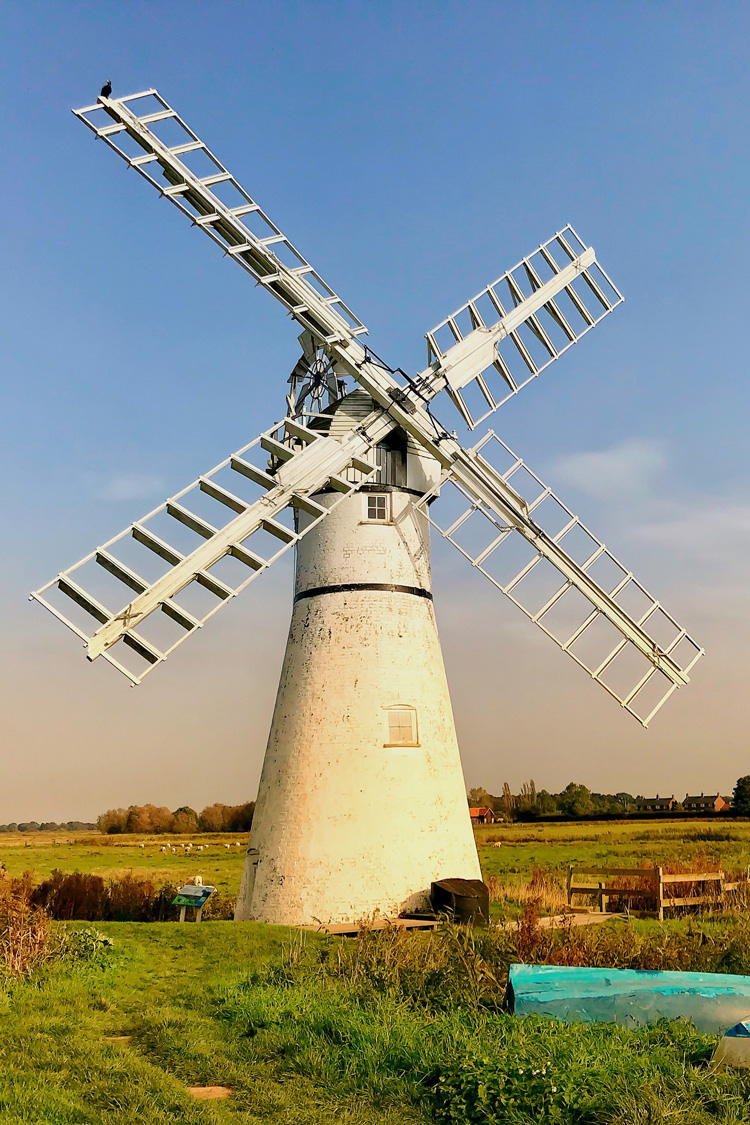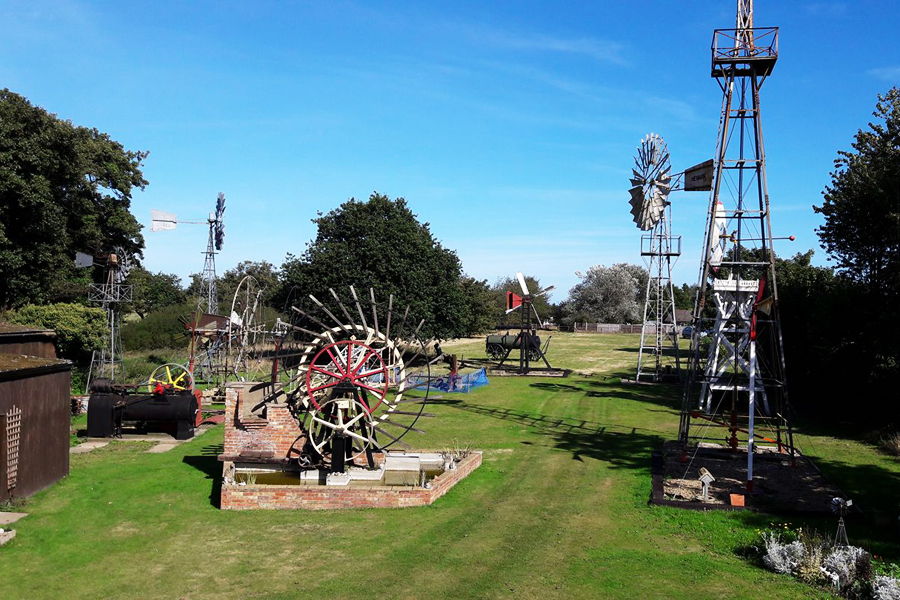


As I look out of my window at the hooley blowing outside and ask myself whether a sou’wester might be too much for a museum visit, I take a moment to contemplate where it is that I’m actually going: the Wind Energy Museum
It seems odd that there should be a museum dedicated to something as intangible as wind. And that is why, sufficiently intrigued, I pulled on my wellies, zipped up my coat and ventured out last week to make the most of the Broads Outdoors Festival.
After following a long, meandering road, which took me far off the beaten track, I was met by Wind Energy Museum owner, Debra Nicholson, dressed in a purple parka and wearing a broad smile despite the rain. She took me past all manner of sails and wheels and began to explain about the various examples of Broads technology, which had been part of the national park for so long, and which are now her legacy to maintain for future generations.
I soon learned that the Wind Energy Museum was far more than just mesmeric sails and ingenious engineering. Because the Wind Energy Museum might never have existed at all if it hadn’t been for the unlikely friendship of local eccentric Mr Ronald Morse (think black-and-white photograph, moustache, passion for windmills) and the enthusiastic Debra Nicholson who was so kindly talking me through her collection.
When Debra was studying for a photography A level she soon found her muse in the windmills of the Broads National Park. There was something about their special place in the landscape, their historic interest, their majesty beside the water. Of them all, it was Thurne Windmill which most captured her imagination and so she set off on a quest to find its owner and discover more about the focus of her portfolio.
What she hadn’t expected, when at last she tracked down the owner’s phone number, was to be greeted by an elderly gentleman who explained that he might sound a little hoarse because this was the first time that he had spoken to anybody all week. Debra soon struck up a friendship with the sparky and intelligent Mr Morse, whose collection of wind energy paraphernalia was immense, and whose knowledge even more so. Most importantly, she felt it was imperative to keep ringing him every day from that day forward, as she couldn’t bear the idea of somebody as lovely as Ronald finding themselves without anybody to talk to.
Before too long, Ronald was a part of the Nicholson family, often ringing her to check that she was OK when she found herself a bit behind time in ringing him. There were many shared family barbecues and Christmas dinners before the enigmatic Mr Morse sadly passed away. He left Debra his legacy, a collection of wind energy paraphernalia and his most beloved of all, Thurne Mill.
Keen to see his lifetime’s work live on, Debra continued to maintain and improve the Wind Energy Museum. And it is now hard to imagine the Broads National Park without it. For there are surely no buildings more quintessentially Broads National Park than the mills which helped create the landscape we recognise today. And there is truly nobody more knowledgeable now to showcase the museum collection than the present owner.

Debra led me around her museum, pointing out the perfectly scaled down model of Thurne Mill, which had been lovingly created by Mr Morse before he even owned the mill. She tells me all about the quirky man who had nine cats and no fridge, the man whose family had been sails and cogs and whose legacy has now become hers.
Thurne Windmill is arguably the most iconic of all the windmills in the Broads National Park and the collection of pumps and engines in the museum really is unique. Debra explains the constant battle to keep these relics of history alive and working. And I am completely bewitched by what is not just a fairy tale but a vocation and a mission to keep one man’s dream alive and to forge new dreams and passions in the visitors who come to experience the museum.
As I leave the Wind Energy Museum I realise that I couldn’t have come on a better day for it. What better day to see the effects of the wind? Every sail in the museum was turning with full vigour, and all of them were doing so for a reason as intangible as the wind. Because the wind is so often used as a metaphor, as the archetypal example of something felt but unseen, like friendship or kindness or love. A thing one can’t quite put a finger on but is always there. And now I know, and you do too, that like the wind, the kindness, friendship and love of Mr Morse and Ms Nicholson could never have been seen and yet there it is, turning the sails of all those mills and pumps nonetheless, and without it, they might not be turning at all.
I hope that you too will take the opportunity of the Broads Outdoors Festival to experience something that makes the Broads National Park so special.
For more mill events, on Saturday 12 May try Rails, Trails and Sails at Reedham, or open days at Thurne Mill and Stracey Arms Mill. On Sunday 13 May Thurne Mill is open again as well as Stubb Mill at Hickling.
Full details of all events, including boating activities and gardens to visit, are available on the festival pages.